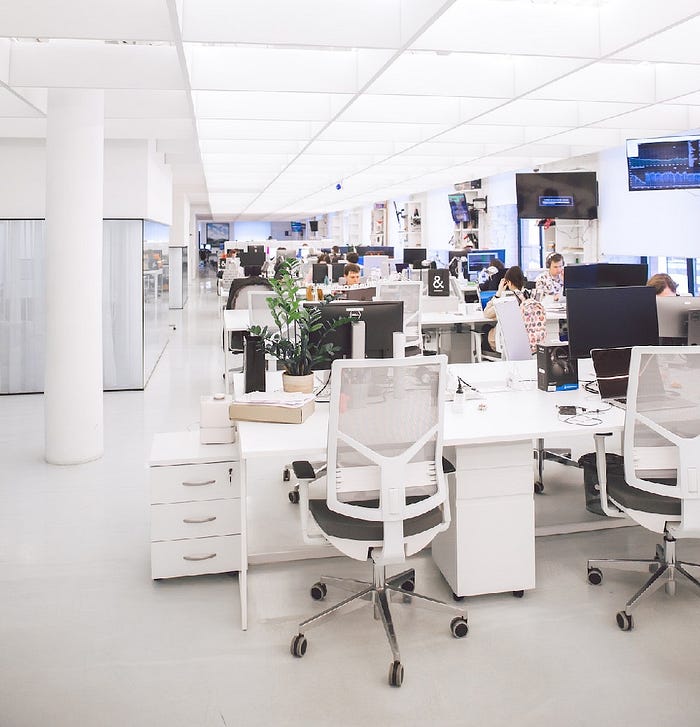Factors to Consider When Making a Corporate Workspace Design Layout

A corporate workspace design layout can make or break the overall work environment and productivity of your employees.
That makes it crucial to consider all the factors involved in designing an ideal corporate workspace.
In this article, we’ll discuss some of the most important factors that you should consider while creating a corporate workspace design.
1. Workflow and efficiency
When it comes to designing a corporate workspace, the foremost thing to consider is the workflow and efficiency of the employees.
A well-designed workspace can improve work processes and increase productivity. Along with striking a balance between privacy and collaboration.
According to a study by the Harvard Business Review, “the design of physical space can have a profound impact on behaviour, mood, and cognition.”
It’s essential for you to understand work processes and design the workspace in a way that maximises productivity.
This can be achieved by incorporating privacy pods for focused work, open collaboration spaces for team meetings, and ergonomic furniture for comfort.
2. Employee comfort and needs
A workplace is not just about work; it’s about the well-being of employees.
Hence, it’s prudent to create a welcoming and inclusive environment that caters to the needs and comfort of your workforce.
Providing ergonomic furniture and equipment can help reduce the physical strain of long work hours and improve employee comfort.
According to a report by the World Green Building Council, “green buildings can improve employee satisfaction, health, and well-being by up to 15%.”
Natural light and green spaces can help create a healthier and more relaxed work environment. It results in increased employee satisfaction and decreased stress levels.
3. Brand identity and image
“Your brand is the promise you make with your customer, and design is the visual expression of that promise.” — Jeff Goodby
Your corporate workspace design layout should reflect the company’s culture and values. It should enhance brand recognition and maintain a consistent design aesthetic.
A well-designed workspace can be a powerful tool in communicating the brand image and values to employees, clients, and visitors.
A consistent design aesthetic can create a sense of unity and a stronger brand identity. At the same time, create a more welcoming environment.
4. Technology integration
In today’s digital age, technology plays a critical role in the workplace.
Incorporating modern communication and collaboration tools in your workspace can improve work processes and increase efficiency.
You should optimise your workspace for connectivity and accessibility, ensuring seamless communication and collaboration between different departments and individuals.
Data privacy and security are also essential considerations in today’s technological age.
With the advancement of technology as it continues to evolve. It becomes imperative to address the concerns about safety.
This ensures that the technology used in the workspace meets the highest security standards.
5. Budget and cost
Making a corporate workspace design can be a costly affair, and it’s essential to prioritize spending and find cost-effective solutions.
A well-designed workspace should be able to accommodate the needs of the company and employees while also being cost-efficient.
It’s also essential for you to plan for future growth and expansion, as the workspace should be able to adapt to the changing needs of your company.
Striking a balance between cost-effectiveness and functionality is crucial. By doing this, your corporate workspace will be able to meet the needs of your company for years to come.
A well-designed workspace improves work processes, increases productivity, creates a welcoming and inclusive environment, enhances brand recognition, and meets the needs of the company for years to come.
It would be great if the design of the workspace could be made more agile.
It leaves room for improvement to ensure that the corporate workspace remains effective, efficient, and relevant over time.
That is in order to continue to meet the evolving needs and expectations of employees, customers, and stakeholders.
Regular assessments of the workspace design can help identify areas for improvement and ensure that the space continues to support the goals and values of the organization.
